Olentangy Wetland Research Site pt. 2
The Olentangy Wetland Research Park can be found along the Olentangy River and its trail, just north of Ohio State’s campus. Just off the trail, one can find a pond full of water loving macrophyte species, a dense understory leading to a small area of prairie. With such a selection of differing areas, we are bound to find interesting plant species along the way. For my survey term project, I have sampled over 50 individual species of plants, with no doubt dozens more available for study in the areas of the park kept from public use. In this post I will be presenting 20 of these species, along with their Coefficients of Conservatism, and some fun facts along the way. Without further ado, here are just a fraction of some of the plants found at this site so far. (Format note: Common Name, Scientific Name, (CC Value))
- Black Willow, Salix nigra, (2)
- Heal-all, Prunella vulgaris, (0)
- Virginia Creeper, Parthenocissus quinquefolia, (2)
- Wingstem, Verbesina alternifolia, (5)
- Cottonwood, Populus deltoides, (3)
- Rice Cut Grass, Leersia oryzoides, (1)
- Boxelder Maple, Acer negundo, (3)
- Swamp White Oak, Quercus bicolor, (7)
- Multiflora Rose*, Rosa multiflora, (0)
- Paper Mulberry, Broussonetia papyrifera, (0)
- Pawpaw, Asimina triloba, (6)
- Red Mulberry, Morus rubra, (7)
- American Sycamore, Plantanus occidentalis, (7)
- Japanese bristle grass*, Setaria faberi, (0)
- Amur Honeysuckle*, Lonicera maackii, (0)
- Lady’s Thumb*, Polygonum persicaria, (0)
- Common Ragweed*, Ambrosia artemisiifolia, (0)
- Devils Beggartick, Bidens frondosa, (2)
- Horsetail, Equisetum hyemale, (2)
- Horseweed, Erigeron canadensis, (0)
*- denotes invasive
4 HIGHEST CC VALUES (don’t ask why they’re all trees I don’t know):
- Red Mulberry (7)
- Identifiable by: 3 leaf types, lobed, unlobed, mitten shaped, reddish brown, easily peelable bark, red, delicious fruits
- Natural History Fact (source): Fruit production only begins between years 4-10.
- American Sycamore (7)
- Identifiable by: Leaves that can be mistaken for maple to the untrained eye, splotchy bark with white and light brown spots.
- Natural History Fact (source): The bark flaking is due to the rigidity as the tree grows, causing irregular spots that expose the other layers of the trunk underneath. While it does grow along streams and rivers, Sycamores are not tolerating of flooded conditions, which is likely why their CC value is relatively high, as they must strike the sweet spot between dry and flooded.
- Swamp White Oak (7)
- Identifiable by: Alternate, obovate leaves with a white underside. I personally tell SWO’s apart from White Oaks with the overall pear shape of SWO, while White Oaks lobes make it resemble more of a puzzle piece.
- Natural History Fact (source): While all white oaks have a white underside to their leaves, SWO has the most distinct difference, which is why it is appropriately bestowed bicolor in its scientific name. Another side fun fact is that this was one of 3 trees I worked with in the wetlands of Lake Erie this summer, and these trees do well in saturated soils, which is why I imagine their CC value is what it is.
- Pawpaw (6)
- Identifiable by: Location, this tree is an understory tree and is unlikely to be dominating the canopy. Leaves are alternate and simple, and the pawpaw has distinct green fruits.
- Natural History Fact (source): Pawpaw has thrived recently to the point of dominating the understory of many eastern forests, likely due to the suppression of wildfire in the Eastern U.S. This is likely due to their poor adaptations to fire compared to other understory trees. I speculate the low CC value is related to their need for a humid climate. Their distribution is supposedly throughout Ohio but I have grown up associating them with Appalachia, so geology may also play a part in this. See below (left)

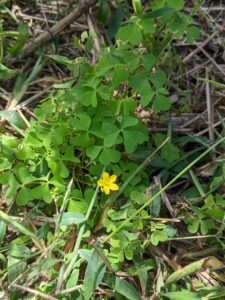
4 LOW CC VALUES:
- White Clover, (0)
- Identifiable by: 3, near ground, oval shaped leaflets
- Natural History Fact (source): It’s nitrogen fixing abilities (fabaceae party :)) mean this plant thrives in poor fertility areas, though it does not do well in dry soils. I would argue this ability is why it has a low CC value. See above.
- Northern Catalpa, (0)
- Identifiable by: large, heart shaped leaves, with relatively long legume fruits
- Natural History Fact (source): The tree’s name comes from the Muscogee Native American tribe’s name for the tree “kutuhlpa”. I have no theories for why this CC value is so low, beyond the fact that it is one of my favorites, so maybe everyone spread it to make me happy 🙂
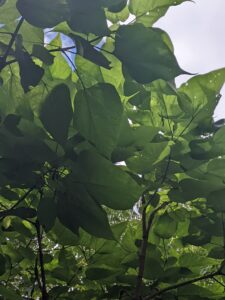
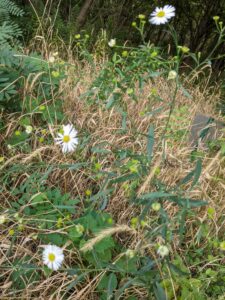
- Eastern Daisy Fleabane, (0)
- Identifiable by: Pale ray flowers, yellow disk flowers.
- Natural History Fact (source): The common name derived from a belief that the dried flower could rid a home of fleas. Many fleabanes are also considered invasive as they displace native wildflowers frequently. This is likely part of why they have such a low CC value. See above.
- Indian Blanket Flower, (0)
- Identifiable by: Branched, hairy stems that become woody with age, red disk flowers, rays red at the center, yellow tipped.
- Natural History Fact (source): This flower has several medicinal uses, and attracts butterflies. It is advertised as easy to grow and only requiring well drained soils, which is why I imagine this CC value to be so low.
4 INVASIVE SPECIES 🙁
- Wild Teasel, (0)
- Identifiable by: Oof owey ouch flowers, very tall, sharp leaves along the stem.
- Natural History Fact (source): It was originally introduced for use in textile production.
- Amur Honeysuckle, (0)
- Identifiable by: Red berries (around this time of year), upright shrub in nature, opposite, ovate leaves.
- Natural History Fact (source): Imported as an ornamental through the New York Botanical Garden. Imagine being the person responsible for that. Yikes. See below: ongoing honeysuckle removal efforts at my site.
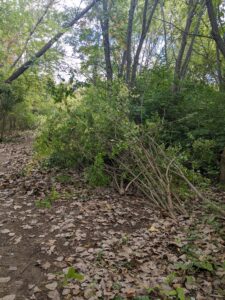
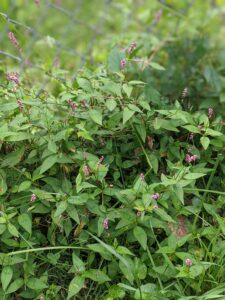
- Lady’s Thumb, (0)
- Identifiable by: Pale pink spike-like racemes of flowers which are very upright.
- Natural History Fact (source): The nectar attracts many insects from moth larvae to wasps to flies to beetles. See above.
- Common Ragweed, (0)
- Identifiable by: Green to light red stem, flower spikes, deeply pinnatifid leaves.
- Natural History Fact (source): Allelopath! What a cheater!
4 SUBSTRATE ASSOCIATED SPECIES
- Hackberry (4)
- While it was certainly not abundant, at least two hackberry trees were found, indicating that to some degree a limestone substrate area.
- Red Cedar (3)
- Exactly 1 small sapling of this tree was found. That area must have higher limestone compared to the rest as this tree is associated with lime heavy subtrates. Jane Forsyth says this plant is also associated with drier areas, partially explaining why it is not abundant.
These were the only substrate associated plants I was able to find (listed with Geobotany at least)! My theory is that because this is a restoration / research oriented site, they may have managed for substrate / pH at some point through the process. However, the two plants that I was able to find would accurately reflect the geographic prediction, as this site falls well within the unglaciated zone of Ohio.
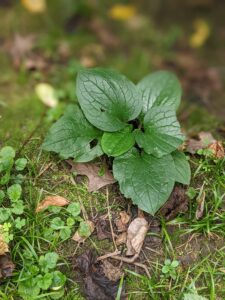
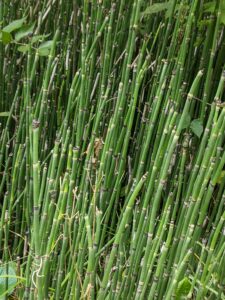
Common Blue Violet, Horsetail. Two other fun photos from the site that I wanted to share, as the horsetails are neat and the Violet is about as high quality as my phone camera can get.

Comments
Olentangy Wetland Research Site pt. 2 — No Comments